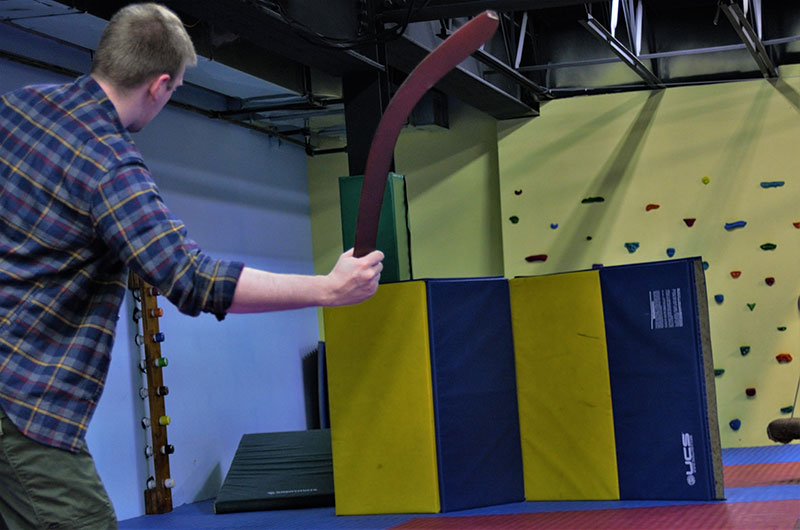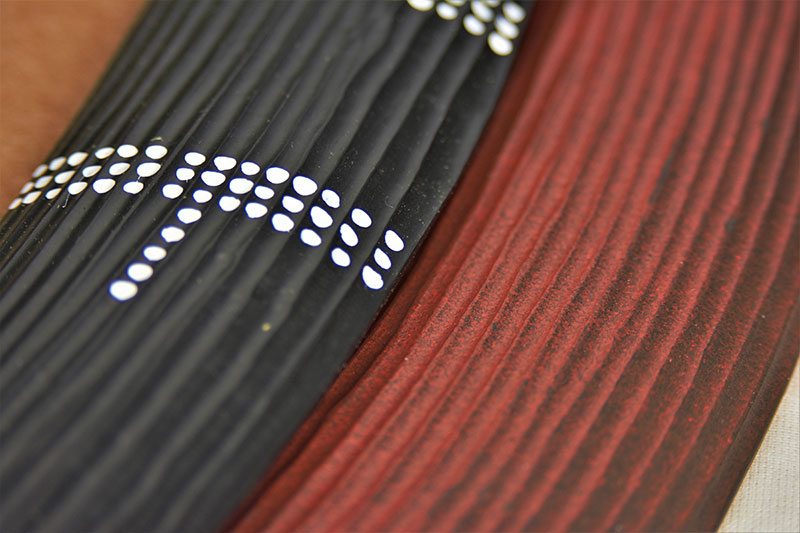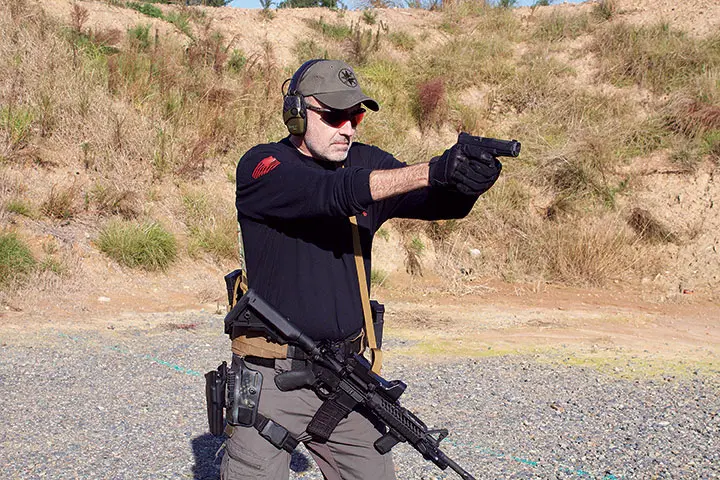






The use of sticks to hunt small and medium game is thoroughly documented. Throwstick variants have been found in the tombs of Egyptian pharaohs but were truly made useful by many native tribes, especially the Australian Aboriginals. Throwsticks and rabbit sticks are variations of the more advanced kylie.
While these hunting tools have been discovered across five continents and in varied climates, they usually find their place in the desert. The reasons are straightforward. A kylie can travel great distances compared to other hunting tools and weapons that existed before the advent of firearms.
They can easily travel 50 to 120 yards with an average throw. In North America, the Hopi Indians of Arizona employed a similar tool to hunt rabbits successfully over 50 yards. Because of the climate that the throwstick is commonly used in, it was made famous by the Aboriginal tribes, but is not a boomerang.
But since it is closely related to the boomerang, many users assume a kylie will return to the thrower or that the distance is limited. The fact is, it is meant to reach out and touch the game, not return. Reaching far away from the user makes it very easy to lose, especially in wooded and forest environments.
Kylies are also extremely difficult to make and incorporate aerodynamics that are still not completely understood. The way to make the efficient Aboriginal kylies was passed down to the younger generations. Because of the quality of the curves and design, they surpass their inter-continental counterparts in efficiency, range, and longevity even when struck on a hard surface. There are many designs to choose from, which also adds to the confusion.
Table of Contents
KYLIE’S USES AS A MODERN PRIMITIVE TOOL
The kylie is a straight-flying hunting and multi-tool. It is relatively easy to use but requires an extensive amount of time and practice to become proficient. Straight and level flight is achieved only by making a throw that is released when moving forward and horizontal with the ground. A considerable amount of force is needed to achieve a broader effective range.
A spinning motion when thrown gives the kylie enough force to seriously hurt or kill the target animal. It is not recommended to hunt small deer with a kylie. However, some Native American tribes wielded a similar tool to sweep and break the legs of small deer, which could then be quickly caught and dispatched.
Those who prefer primitive technology will find this an excellent tool for small game when other tools are unavailable. A well-built kylie holds up to a massive amount of abuse and can even double as a digging stick, just as they were in the Australian outback. Traditionally, they were used to take out deer, rabbits, or kangaroos through leg or head strikes.
Even though kylies are traditionally found in the desert, they are also practical in other surroundings. On the Eastern Seaboard, the forests aren’t impenetrable and can allow a user to get a significant amount of distance on a proper throw. Squirrels, rabbits, raccoons, and other small animals can easily become prey of a hunter with a kylie.
PRACTICED USE
I have recently begun carrying a throwstick during the spring and fall months. With the discovery of a modern manufacturer of kylies, it’s become a secondary tool in the field, to my knife. I prefer the Wirlki model for its unique shape, which has limited but devastating range. It fits comfortably into a hatchet loop.
The hooked end makes it an effective tool for reaching and hooking something over water or in an extreme emergency over fire. Keep in mind that if your tools are made out of plastic or wood, a fire will destroy them. I find the kylies extremely useful during the spring and fall months, when spiders are moving their webs between the trees. The kylies keep the webs out of my face, and I have a hunting tool at the ready for any small game spotted.
Living in the Northeast corner of the United States means I have a comprehensive range of landscapes. Wide-open fields and farms are just as common as thick forests and cities. Both long- and short-range options are perfect for my surroundings. Being proficient in both has proven to be a challenge, but not impossible. No matter which design a user chooses, all weight should be about 15 ounces or less.
It took some time to get used to the design. Every type of throwstick I had previously become accustomed to through interaction with locals is very different from the kylies I had in hand. Historically, throwsticks were merely sticks with a rock or knot on the end. None had the tuning, impact, and flight distance that a kylie offers.
For fear of losing the tools, I found it best to practice indoors. Setting up a rigid foam barrier inside a gym proved an eye-opening experience. Every new user should start with a humble throw and gradually add strength. With enough strength, I found the kylies could easily knock over the 50-pound barrier and still push through and to the other side.
A proper throw is essential and requires hours of practice. A properly thrown and efficiently balanced kylie will fly the same way with the same amount of force. Too much force and the weapon dips up during flight. Too weak of a throw and it drops like a knuckle-ball. Once the “sweet spot” of a kylie is found, it reaches distances that cannot be matched when trying to throw with extra force.
MODERN MATERIAL AND MANUFACTURE, PRIMITIVE USE
Throwsticks owner Benjamin Scott has been investigating the history and design of the ancient kylie. His company produces seven common variations of the Aboriginal and Hopi designs. Every cut and curve are done by hand and carved out of polycarbonate, which closely matches the weight and hardness of the originals. He hand-tunes every product for optimal velocity and range. Through years of research and study, Ben has made one of the closest copies of the Aboriginal designs.
CONCLUSION
For a primitive hunter or bushcrafter, nothing is more useful than a stick. A hunting stick that can soar straight for considerable distances is not only useful but unique. While becoming proficient is a necessity, it does take quite a bit of time and is not a skill someone can utilize only when convenient.
Anyone can make throwsticks and kylies, but it’s virtually impossible to get the same type of range and durability as pre-made and purchased. The kylie fits in where other ranged weapons fall short, mainly distance and reusability. There is no need to make additional arrows, learn fletching, or struggle to obtain proper materials. While a kylie might not be an adequate replacement for other primitive ranged weapons, it’s a great accompaniment with a proven history.
SOURCE
THROWSTICKS
www.throwsticks.com






